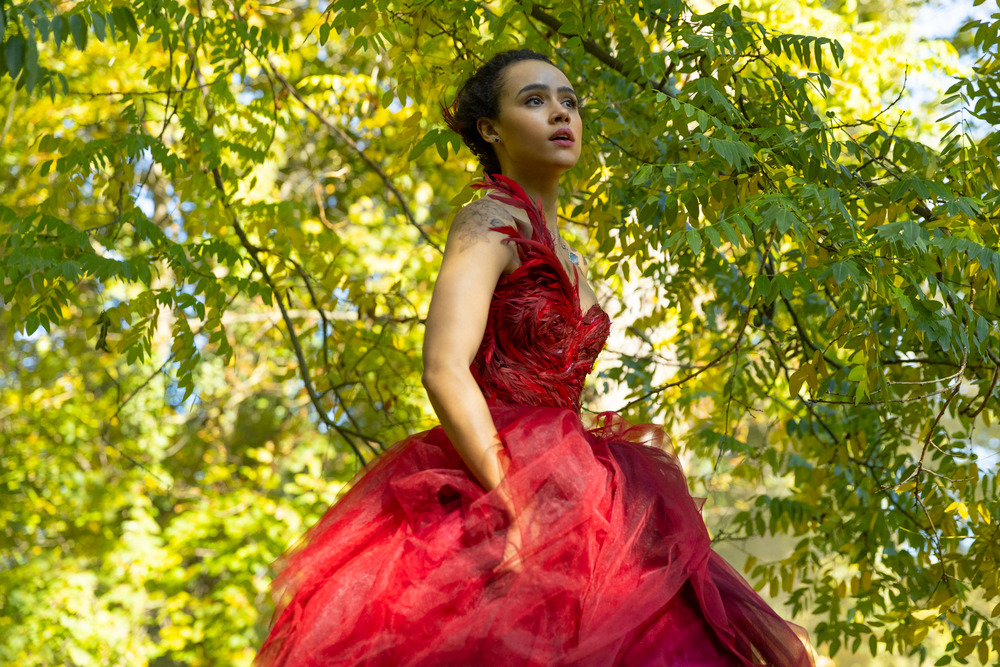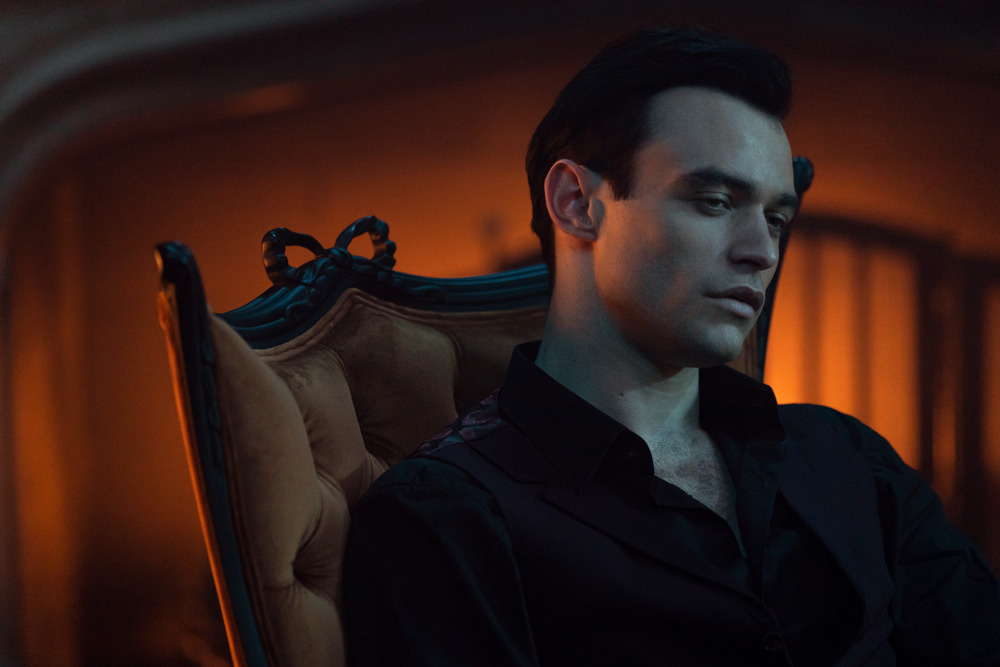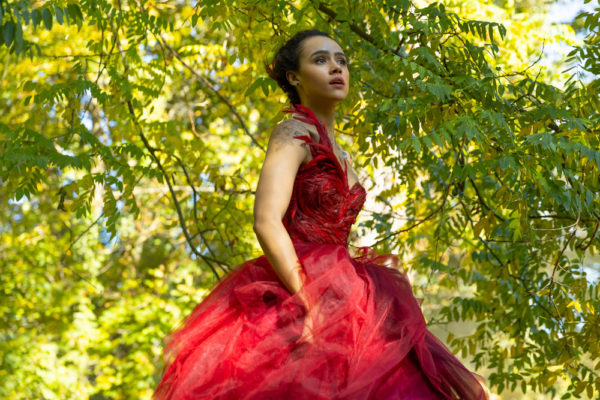In theaters this weekend, director/producer Jessica M. Thompson’s The Invitation brings capital-G Gothic storytelling to theaters with the story of a struggling, orphaned woman (Nathalie Emmanuel) who discovers an entire branch of her family she was never aware of. They’re British, rich, distinguished… and there’s something very, very wrong with them. In advance of the film’s August 26th theatrical release from Sony, Boxoffice Pro spoke to Thompson about her genre-bending foray into theaters.
Congrats on the film–how did you come to be attached?
The script that Blair Butler wrote was sent to me in January 2020. I had been looking for my next project after [Showtime series] The End. I’d been writing and reading scripts and seeing what was coming up. When I read this, I was really intrigued because it was, to me, a MeToo film without being a MeToo film. To me, it is about smashing the patriarchy. [The arc of the main character–cut for spoilers–is such an] an interesting concept. I hadn’t seen that before. Definitely not on a big screen. And Blair’s script was really strong. We worked together for over a year, rewrote it and added a little bit more layers, added more of the romance, so it was really believable and authentic and these relationships were really strong. And then, basically, we went into production. We filmed in Hungary for six months.
I know it’s a horror film, but I was definitely getting Jane Austen vibes at time. It’s a neat combo of genres.
Jane Austen was definitely one of my influences in terms of the romance. There are a couple of quotes from Jane Austen in the movie. I love a “genre mash.” I love when something’s not just straight horror or straight sci-fi. I also love the fact that so many filmmakers these days are using genre as a way to explore, to basically give social commentary on things that are concerning to them. Obviously, everybody loves Get Out. I also think about The Babadook being an exploration of motherhood and fear of motherhood, and Hereditary being an exploration of grief. I think it’s something that you can do in this genre.
There’s a lot about privilege and inherited trauma that you can put into a story about a woman finding out she has these very distinguished, if somewhat sinister, ancestors.
I was really adamant about casting a woman of color in the lead, because to me, that just added another layer to the story. Women of color have probably been the most disenfranchised group by the patriarchy and the powers that be. To me, it’s this upstairs/downstairs world; this fairytale meets this nightmare. It was really lovely to work with Autumn Eakin, my cinematographer, who also worked on my first feature, The Light of the Moon, to create that visual language using lighting and different lenses and things like that.
The cinematography and the score were two things that I really loved about the film–and then I went on IMDB after to look up who did them and was a bit surprised to see that they’re both women. That shouldn’t be cause for surprise, but it’s still unusual.
I definitely intentionally did that, because we need more women and this is a feminist film. And I also think, why not? It’s not even a matter of men versus women, it’s just different perspectives, right? We’ve had so many old white men telling stories, and I think as soon as you add some diversity in there, the stories become more interesting.
And Dara Taylor, who did the score, is also a woman of color. That’s even more rare in the composition world. And I just think she’s incredible. I’m glad that you were moved by the score, because I think she went above and beyond. Some of those motifs and melodies that she created can be really beautiful and really haunting at the same time.

Could you elaborate a bit more on finding out or searching for the visual language in the film? Because I always love anything that’s capital-G Gothic, and this definitely classified.
The production designer, Felicity Abbott, is wildly talented. She has a lot of classical art influences, and so do I. The design really is evocative of the Gothic era. But also, I wanted to make sure it was modern. For instance, all the lighting fixtures are modern. They’re actually quite avant garde and twisted and interesting, when you go back and watch them. It was something like a little visual cue to show the two worlds colliding.
And we did a lot of little things, like in the design of the costumes, for instance. The dress that Evie wears at the end [has] a traditional Romanian pattern of embroidery on the bodice part, but we decided to make [the dress] backless to create that modern feeling. It was all, to me, about mashing those two. The contrast, the juxtaposition of the old and the new, the fairytale and the nightmare. For instance, in the rehearsal dinner scene, we had that beautiful tablescape with all that decadent food—but really, when you look underneath, it’s all rotting and festering. There were literally flies and maggots that were there while we were filming. That’s all part of telling the story. It’s what’s on the page, but it’s also what you see on the screen.
Did you go to the movies a lot as a kid?
I did. I come from an immigrant family, and that was kind of the way we did things. Blockbuster Fridays were definitely the thing in my house. We all used to take turns every Friday picking three movies from Blockbuster and watching them throughout the weekend. But also, the cinema to me is a magical experience. Cinema is my church. This is definitely a film that is best watched in the cinema, with that kind of communal environment. I love hearing the audience laugh and cry and get tense and scream and get scared. There’s nothing like it. Don’t get me wrong, yes, I love to also sit on the couch and watch films. But there’s nothing like going to the movies and getting the full effect.
Especially with horror movies and comedies–they’re not the same if you’re by yourself.
I agree. The amount of [times] that I’ve seen [something hilarious] in the cinema, and then I rewatch them [and think], “This isn’t that funny.” You really need that communal atmosphere.
I remember when I watched Get Out–I actually saw it twice in the cinema in Brooklyn–and people were literally stomping their feet and yelling at the screen. It was the most interactive film I’ve ever been a part of. It was an absolute joy.
We had a screening for the film yesterday with some of [actors] Thomas [Doherty’s] and Nathalie [Emmanuel’s] friends and some industry people. It was just, to be honest, so amazing to hear everybody cheering for the different twists and turns at the end. That’s just such a joy.
Are you surprised by the audience reaction ever when you watch the film in screenings? Does it make you see anything about the film in a different way?
Yeah. The film is funnier than I thought. I definitely love comedy. I love putting comedy in films unexpectedly. In my first film, I still had a lot of dark gallows humor. And I love that so many people were laughing at the jokes.
Also, the amount of people covering their eyes for bits that I didn’t think were that scary was really funny. With the score, they think, [gasps] “What’s gonna happen?” I’d see people covering their eyes and waiting for it.
When Thomas Doherty first gets to the screen, I love hearing the “Oooh.” And I will say, it’s not just women and gay men, it’s straight men too.

You’re a producer as well as a director, and you’ve done both film and TV. When you’re making something, do you think much about how people are ultimately going to be seeing it?
Absolutely. We’re exhibiting the PG-13 version in cinemas, but we’re actually releasing the R version online, on the streamers. That’s really cool, that we get to finish two different versions of the film. There are some incredible PG-13 horror films, like A Quiet Place and things like that. But you are definitely a little bit more limited in what you can show, what you can say.
I’m a sucker for a director’s commentary. I love those little extras, so I’m excited to do that. To me, I’m always making a film for the cinematic space. I always put that first. You don’t intend your films to be watched on iPhones. I understand that that’s how sometimes people want to and need to watch them. But I’m always going to make it a full cinematic experience.
Especially for a movie like this one, there’s a fine balance to walk in the marketing between showing too much and too little. I always find it interesting, seeing movies with a twist and then going back and watching the trailer and thinking about what was put in and what was left out.
I don’t want anyone to watch the trailer. I want them to just go in and enjoy the ride, enjoy the twists and turns. I love trailers, and I understand that it’s definitely a marketing tool to get people to come watch the film. But yes, “How much do you tell?” is definitely a question. Sony’s been incredible partners, and they do very good marketing, so I trust them. I trust the process.
I want to ask you about the costume design, because it was so over-the-top.
The costumes were designed by myself and the costumer, Danielle Knox. They were all bespoke, created from scratch. … For me, the most striking dress–[one] that people in the audience cheer when they first see it–is that beautiful red dress that Evie wears to the rehearsal dinner. My inspiration [that I told] to Danielle was that I wanted her to look like prey.
Do you remember the first movie that you saw in a cinema?
I know one of the first movies that I saw was Mrs. Doubtfire, and I remember laughing my head off. I do remember the first horror film I saw was Halloween, and I was far too young. I think I was only 10 years old. I had three older siblings, so they would watch things and I probably shouldn’t have been watching them. That film traumatized me. I was scared of the dark for a long, long time. But it also drew me in. It’s one of those things that I love about horror films: It’s like a roller coaster. It’s that fear, that adrenaline that keeps you going, and it’s very alluring. It didn’t stop me from watching horror films in the future, that’s for sure.



Share this post